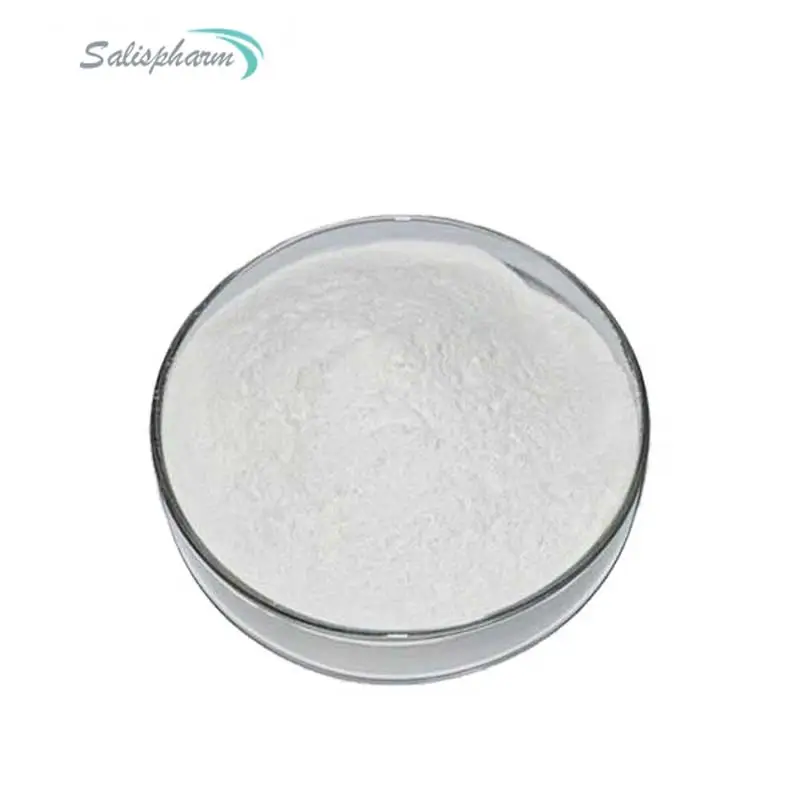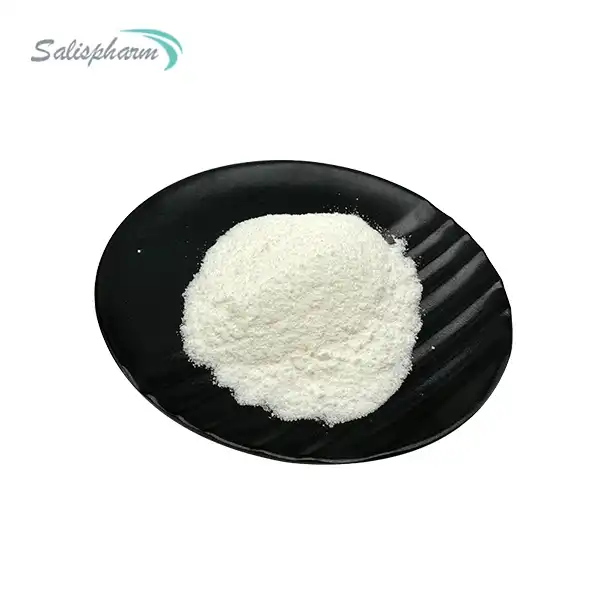Latanoprost is a widely used medication in ophthalmology, primarily prescribed for the treatment of open-angle glaucoma and ocular hypertension. As a prostaglandin analog, latanoprost has revolutionized glaucoma management by offering an effective and well-tolerated option for reducing intraocular pressure (IOP). This blog post delves into the pharmacological mechanisms of latanoprost, exploring its unique properties and mode of action in the eye.
What is the mechanism of action of latanoprost?
Latanoprost's mechanism of action is both fascinating and complex, involving several physiological processes within the eye. At its core, latanoprost functions as a prostaglandin F2α analog, specifically targeting the FP prostanoid receptor. This interaction sets off a cascade of events that ultimately leads to increased aqueous humor outflow and reduced intraocular pressure.
When latanoprost is applied topically to the eye, it penetrates the cornea and is hydrolyzed to its active form, latanoprost acid. This active metabolite then binds to FP receptors in the ciliary muscle and trabecular meshwork. The binding initiates a series of biochemical reactions that result in the remodeling of the extracellular matrix in the ciliary muscle and uveoscleral pathway.
One of the key effects of latanoprost powder is its ability to increase the synthesis of matrix metalloproteinases (MMPs), particularly MMP-1, MMP-2, and MMP-3. These enzymes play a crucial role in breaking down collagen and other extracellular matrix components. As a result, the spaces between ciliary muscle bundles expand, creating a more porous structure that facilitates aqueous humor outflow.
Additionally, latanoprost induces changes in the shape and size of ciliary muscle cells. These morphological alterations further contribute to the increased uveoscleral outflow facility. The drug also affects the trabecular meshwork, enhancing the conventional outflow pathway to some extent.
It's important to note that unlike some other glaucoma medications, latanoprost does not significantly affect aqueous humor production. Instead, its primary effect is on outflow, which sets it apart from other classes of IOP-lowering drugs.
The unique mechanism of action of latanoprost offers several advantages. First, it provides a sustained reduction in IOP, with effects lasting up to 24 hours after a single dose. This allows for once-daily dosing, which can improve patient compliance. Second, the focus on enhancing outflow rather than suppressing aqueous production means that latanoprost can be effectively combined with other glaucoma medications that work through different mechanisms, allowing for additive IOP-lowering effects when needed.
How long does it take for latanoprost to lower eye pressure?
The time course of latanoprost's effect on intraocular pressure is an important consideration for both patients and clinicians. Understanding the onset and duration of action helps in managing expectations and optimizing treatment strategies.
When latanoprost powder is first administered, it doesn't produce an immediate dramatic drop in IOP. Instead, its effects build up gradually over time. Typically, a measurable reduction in IOP can be observed within 3-4 hours after the first dose. However, the full IOP-lowering effect of latanoprost is not achieved immediately.
Studies have shown that the maximum IOP reduction is usually reached after 3-5 weeks of consistent daily use. During this initial period, the eye undergoes the structural changes induced by latanoprost, including the remodeling of the extracellular matrix and alterations in the uveoscleral outflow pathway. As these changes progress, the IOP-lowering effect becomes more pronounced.
Once the full effect is established, latanoprost provides stable and long-lasting IOP reduction. A single daily dose can maintain lowered IOP for up to 24 hours, which is why it's typically prescribed for once-daily evening use. This extended duration of action is one of the key advantages of latanoprost over some other glaucoma medications that require more frequent dosing.
It's worth noting that individual response to latanoprost can vary. Some patients may experience a more rapid onset of action, while others might take slightly longer to reach maximum effect. Factors such as baseline IOP, the severity of glaucoma, and individual physiological differences can influence the response time.
Clinicians usually schedule follow-up appointments a few weeks after initiating latanoprost therapy to assess its effectiveness. If the IOP reduction is insufficient after 6-8 weeks of treatment, they may consider adjusting the treatment plan, which could involve increasing the dose, adding another medication, or exploring alternative options.
The gradual onset of latanoprost's full effect underscores the importance of patient education and adherence. Patients should be informed that they might not notice an immediate change in their symptoms or IOP readings, and that consistent daily use is crucial for achieving and maintaining the desired therapeutic effect.
Can latanoprost powder be used to make eye drops?
The question of whether latanoprost powder can be used to make eye drops is an intriguing one, particularly given the interest in pharmaceutical compounding and personalized medicine. While latanoprost is typically dispensed as a pre-formulated ophthalmic solution, there are scenarios where compounding from powder form might be considered.
Latanoprost powder is indeed the raw material from which commercial latanoprost eye drops are manufactured. However, the process of creating a safe and effective ophthalmic solution from the powder is complex and requires specialized knowledge and equipment.
Several factors must be considered when contemplating the use of latanoprost powder for eye drop preparation:
1. Formulation Complexity: Latanoprost is highly lipophilic and poorly soluble in water. Commercial formulations use specific excipients and techniques to ensure proper solubility and stability. Creating a stable solution that maintains the drug's efficacy is challenging without access to pharmaceutical-grade equipment and expertise.
2. Concentration Accuracy: Latanoprost is used in very low concentrations (typically 0.005%). Accurately measuring and diluting the powder to achieve the correct concentration is critical and requires precise analytical tools.
3. pH Adjustment: The pH of latanoprost eye drops is carefully controlled to ensure ocular compatibility and drug stability. Achieving and maintaining the correct pH in a compounded preparation can be difficult.
4. Sterility: Ophthalmic preparations must be sterile to prevent eye infections. Ensuring sterility in a compounded product requires specialized facilities and techniques that may not be available outside of pharmaceutical manufacturing settings.
5. Stability: Latanoprost is sensitive to light and temperature. Commercial formulations are designed to maintain stability under specific storage conditions. Compounded preparations may not have the same stability profile, potentially leading to reduced efficacy or increased degradation products.
6. Regulatory Compliance: The use of compounded medications is subject to regulatory oversight. In many jurisdictions, there are strict rules governing the compounding of ophthalmic preparations, especially for drugs like latanoprost that have commercially available alternatives.
Given these considerations, the direct use of latanoprost powder to make eye drops is generally not recommended outside of properly equipped pharmaceutical manufacturing facilities. For patients and healthcare providers, the safest and most reliable option is to use commercially prepared latanoprost eye drops that have undergone rigorous quality control and regulatory approval processes.
However, there are situations where pharmaceutical compounding of latanoprost might be considered. For instance, in cases of drug shortages or when patients require a formulation that is not commercially available (such as a preservative-free version), specially licensed compounding pharmacies may be authorized to prepare latanoprost eye drops under strictly controlled conditions.
In conclusion, while latanoprost powder is the starting material for eye drop production, its use should be restricted to properly equipped and regulated pharmaceutical facilities. Patients and healthcare providers should rely on commercially available, FDA-approved latanoprost formulations to ensure safety, efficacy, and consistency in glaucoma treatment.
If you are also interested in this product and want to know more product details, or want to know about other related products, please feel free to contact iceyqiang@aliyun.com..
References
1. Digiuni, M., Fogagnolo, P., & Rossetti, L. (2012). A review of the use of latanoprost for glaucoma since its launch. Expert Opinion on Pharmacotherapy, 13(5), 723-745.
2. Lindén, C., & Alm, A. (1999). Prostaglandin analogues in the treatment of glaucoma. Drugs & Aging, 14(5), 387-398.
3. Toris, C. B., Gabelt, B. T., & Kaufman, P. L. (2008). Update on the mechanism of action of topical prostaglandins for intraocular pressure reduction. Survey of Ophthalmology, 53(6), S107-S120.
4. Stjernschantz, J. W. (2001). From PGF2α-isopropyl ester to latanoprost: a review of the development of xalatan. Investigative Ophthalmology & Visual Science, 42(6), 1134-1145.
5. Alm, A. (2014). Latanoprost in the treatment of glaucoma. Clinical Ophthalmology (Auckland, NZ), 8, 1967-1985.
6. Garway-Heath, D. F., Crabb, D. P., Bunce, C., Lascaratos, G., Amalfitano, F., Anand, N., ... & Zeyen, T. G. (2015). Latanoprost for open-angle glaucoma (UKGTS): a randomised, multicentre, placebo-controlled trial. The Lancet, 385(9975), 1295-1304.
7. Easty, D. L., Nemeth-Wasmer, G., Vounatsos, J. P., Girard, B., Besnainou, N., Pouliquen, P., ... & Rouland, J. F. (2006). Comparison of a non-preserved 0.1% T-Gel eye gel (single dose unit) with a preserved 0.1% T-Gel eye gel (multidose) in ocular hypertension and glaucomatous patients. British Journal of Ophthalmology, 90(5), 574-578.
8. Ghate, D., & Edelhauser, H. F. (2008). Barriers to glaucoma drug delivery. Journal of Glaucoma, 17(2), 147-156.
9. Weinreb, R. N., Ong, T., Scassellati Sforzolini, B., Vittitow, J. L., Singh, K., & Kaufman, P. L. (2015). A randomised, controlled comparison of latanoprostene bunod and latanoprost 0.005% in the treatment of ocular hypertension and open angle glaucoma: the VOYAGER study. British Journal of Ophthalmology, 99(6), 738-745.
10. Konstas, A. G., Quaranta, L., Katsanos, A., Riva, I., Tsai, J. C., Giannopoulos, T., ... & Stewart, W. C. (2013). Twenty-four hour efficacy with preservative free tafluprost compared with latanoprost in patients with primary open angle glaucoma or ocular hypertension. British Journal of Ophthalmology, 97(12), 1510-1515.









